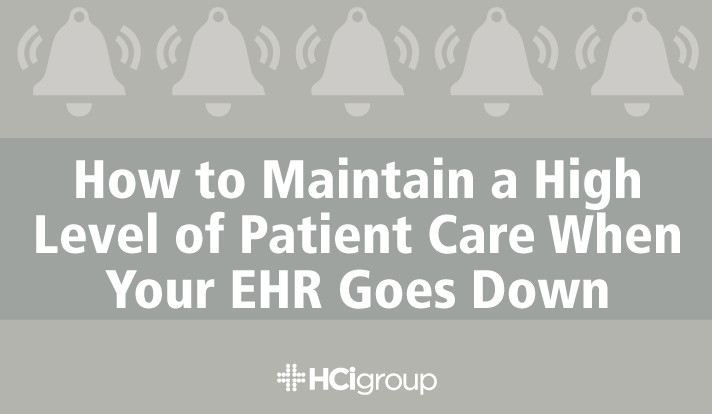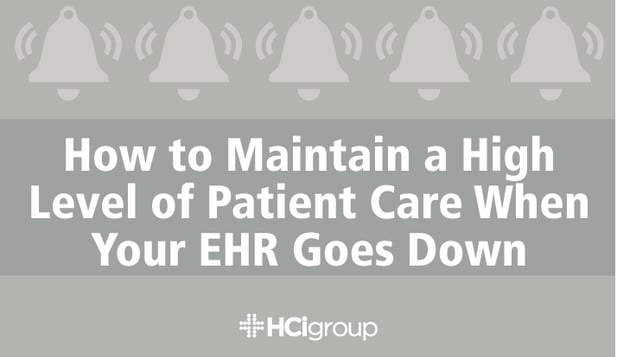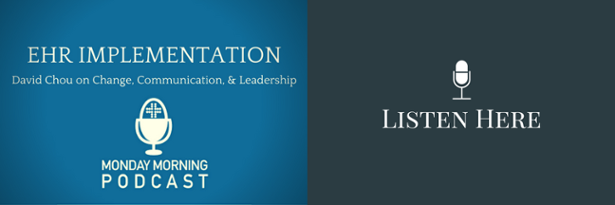How to Maintain a High Level of Patient Care When Your EHR Goes Down


As much as vendors would love for their system to never go down, the reality is that it is going to happen from time to time. Being able to handle downtime effectively can mean all the difference in maintaining a high level of safe patient care while your system is offline.
There are two types of down-time that can occur: planned downtime and unplanned downtime. In today’s blog post, HCI’s EVP of Clinical Solutions Bob Steele goes over what downtime is, and what goes into creating a plan on how to deal with your system being down.
1) Planned Downtime vs Unplanned Downtime
Planned downtime is commonly seen in association with upgrades, patches, and other various changes to the system. Planned downtime is obviously much easier to deal with as there will be advanced notification, and due to the fact that it is usually done at non-peak hours – for example, between 3-5 AM on night shifts when there is decreased activity.
Unplanned downtime, however, can create much more havoc and potential for patient safety issues. It can occur at any time, and results in the immediate loss of EHR access and information. During unplanned downtime, it is important not to panic. Think about the administration of medication and bar code scanning, as well as the ordering and completion of scheduled diagnostics such as lab and x-rays.
The availability of lab and x-ray results is critically important, as they will be needed in order to make patient care decisions. Documentation will need to continue during this period on all aspects of care, so an ample supply of paper documentation forms and flowsheets must be immediately available in all appropriate areas.
2) Dealing with Confusion and Knowing the Answers
In order to deal with downtime, it is beneficial to have policies, procedures, and backup systems in place. Areas where we commonly see the greatest risk are in education and comfort of the front line staff when converting to downtime. It is common to see confusion or lack of knowledge in regards to the location of downtime computer terminals, forms, and paper documentation tools.
Confusion also arises when it comes to the process for how to order and obtain diagnostic test results, as well as deciding when it is necessary to convert to paper documentation. Do you switch over after four minutes? After 15 minutes? After an hour? These are questions that you must be ready to address, and have a plan for before they arise.
Healthcare facilities may also have issues when they are coming back online. Is your organization prepared to answer the questions that will arise? Do you know:
- What is required to be transcribed into the EHR when it comes back up?
- ex) Time-stamped administration of any medication.
- What to do with the paper documentation?
- Does it go in a hard chart cover?
- Does it have to be scanned?
- What happens in HIM/Medical Records?
- For HIMSS Stage 7, it has to be scanned within 24 hours since it is deemed “clinically relevant.”
In order to maintain business as usual during downtime, be it planned or unplanned, you need to be as prepared as possible, and know what to expect. How can this be accomplished?
3) Drills
When you think of the potential for errors in care and patient safety that downtime can bring about within your healthcare organization, it is necessary to have a detailed process. Your downtime plan must be spelled out, and, most importantly, practiced in a controlled setting.
Make sure that you have all departments, all shifts, and each day of the week accounted for when performing downtime drills. Make sure you don’t forget the weekends, as it is not uncommon for some health facilities to have weekend-only staff members. JCAHO and HIMSS each require one downtime practice per year, but there is no such thing as getting too much practice. The more practice you go through, the more readily prepared you will be for when downtime occurs.
One of the best practices that I have seen has to deal with going to a unit unannounced, placing sheets over the computer terminals, and telling the staff that they are all down. This will allow you to see how they react, to assess their level of knowledge on what must be done during an unplanned downtime, and to look for gaps and potential educational needs. It can be a fun and less intimidating way to drill, and can be done unit by unit as opposed to facility-wide. Practicing downtime drills by individual departments is much easier to manage, and can allow for you to more readily assess how your staff is responding.
Downtime for your EHR is likely to happen at some point, but having a proper plan in place for when it occurs can mean the difference to maintaining business as usual. By knowing what questions should be addressed and regularly performing drills to prepare your entire facility for what downtime will look like, the potential for errors in patient care and safety can be greatly diminished.

